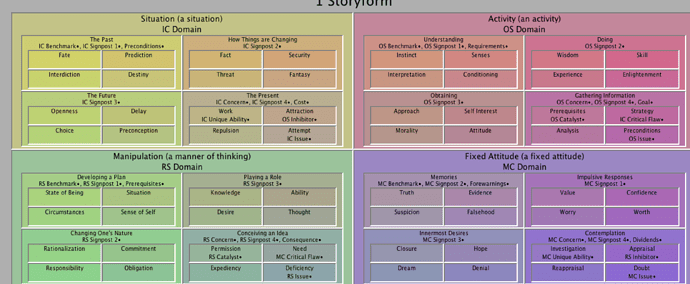Is OS signpost 4.4 as Outcome (of PRCO) the Final Driver?
My IC represents, and works for, a behind-the-scenes antagonist. As I plan the end of my story, I’m looking at the final signpost. It’s an Outcome of a current/circuit. BUT…it’s not the Final driver, right?
Is the final driver Problem + Solution --> failure (in my case) ?
Here’s what the Story Points report says:
In summary, “(my story title)” concerns a Goal regarding Gathering Information, which Requires progress to be made in Understanding. If the Goal is not achieved, a Consequence regarding Conceiving an Idea will transpire. The imminent approach of the Consequence is gauged by instances or degrees of Memories, which come when Preconditions of The Past exist. The Past is not intrinsically essential to progress toward the goal (essential Prerequisites pertain to Developing a Plan) but are made essential by someone’s insistence. As a result of these efforts, Costs involving The Present are incurred, while Dividends are found in Contemplation.
Indeed, the final thing that makes the MC/Pro realize she cannot have her goal is that information he gives. But the IC character arc is bad for him (he’s facing his demons) and the climax from all angles look like a talking thing.
I have action, but the end is a conversation and the MC gets away because of those issues the IC was dealing with.
Yawn!
Here’s my structure. Any input is appreciated.
From three angles it’s a talking signpost 4: MC, RS and OS. The setting is actually tense. But the information she gets is shocking. But after that point I’m painted in a corner. I need him to win, her to lose, but her to walk away.
Question: How can getting information, failure + good, be done without Deus ex machina, or the “villain talk” + side-swipe?
Alternately, can you think of any movies out there that end with similar idea-based climax? Thanks!


